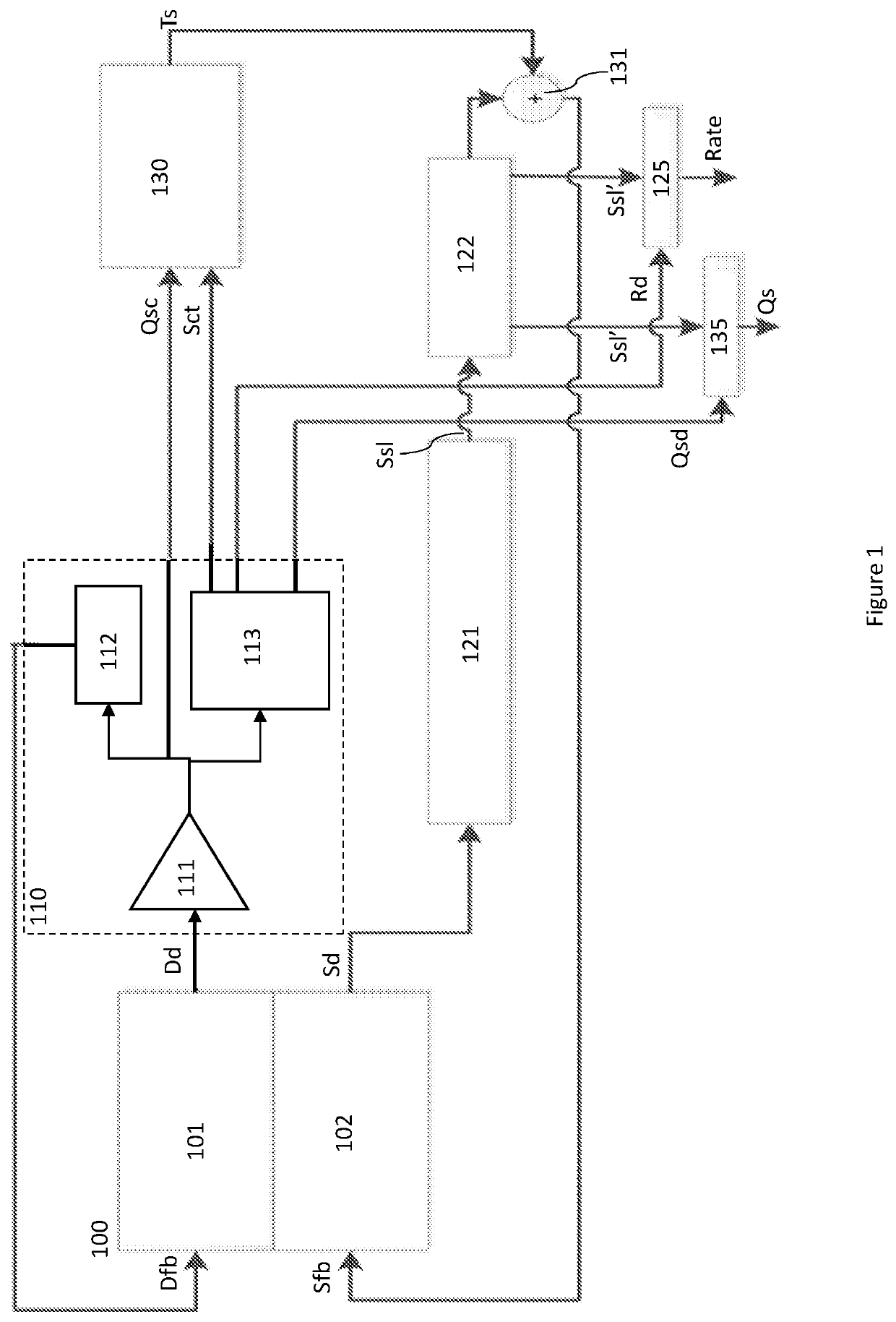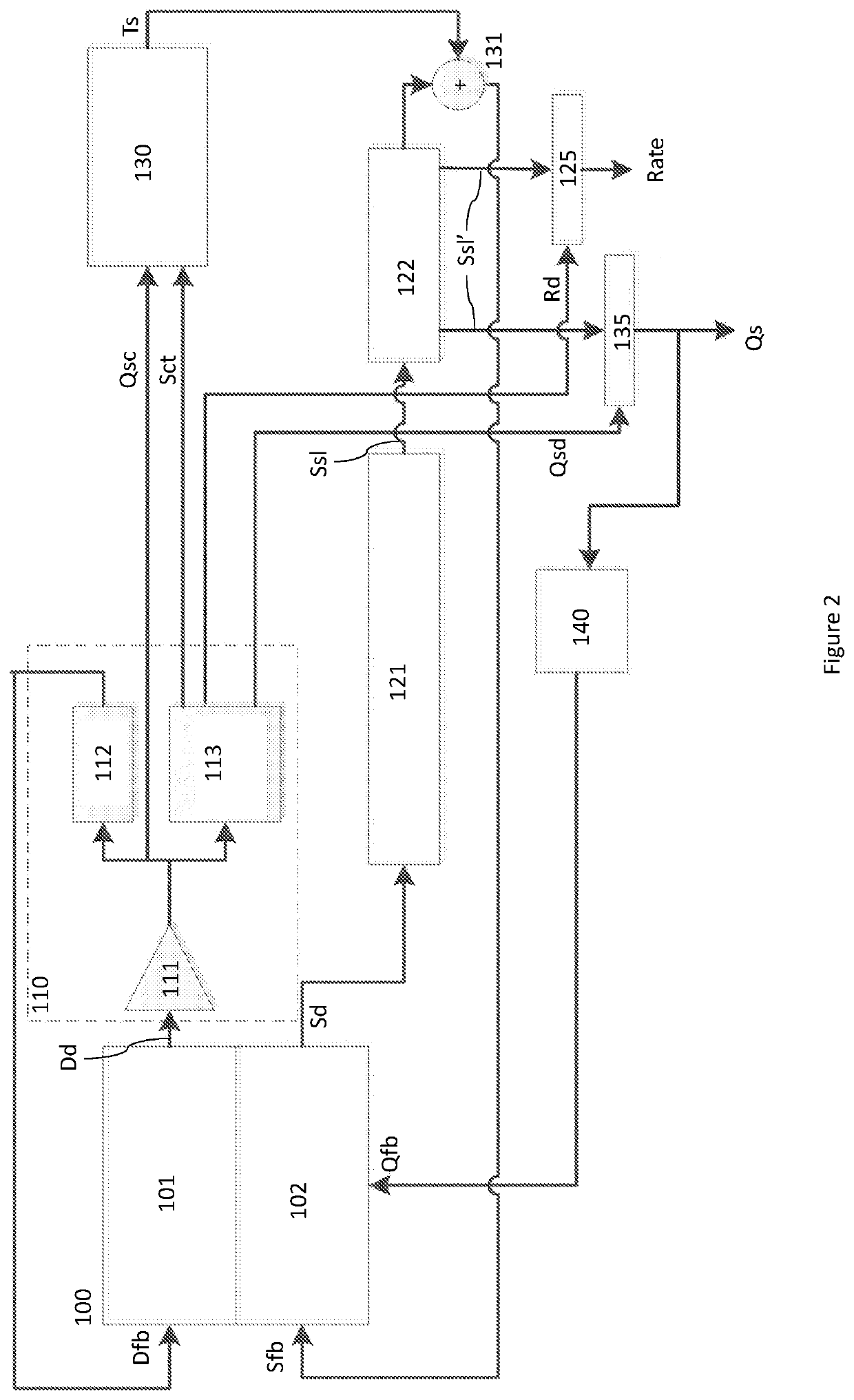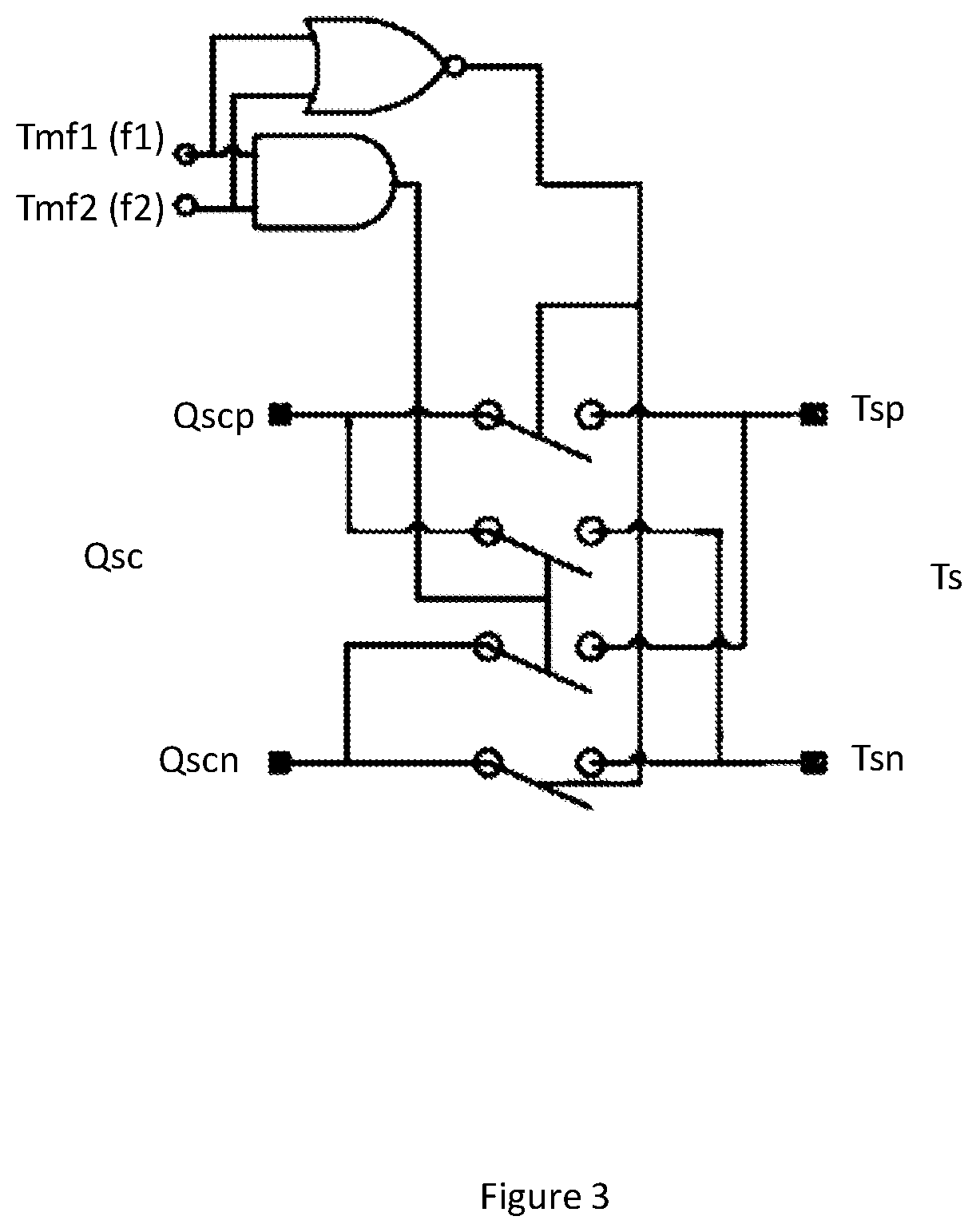Continuous self-test of a gyroscope
a self-testing, gyroscope technology, applied in the direction of speed measurement using gyroscopic effects, instruments, surveying and navigation, etc., can solve the problems of limiting the speed of the feedback loop and the bandwidth of the angular rate sensor, so as to achieve fast error detection time, good detection coverage, and efficient immunity
- Summary
- Abstract
- Description
- Claims
- Application Information
AI Technical Summary
Benefits of technology
Problems solved by technology
Method used
Image
Examples
first embodiment
[0041]The FIG. 1 shows a top-level block diagram of a gyroscope that is of closed-loop type.
[0042]The gyroscope sensor element (100) comprises a drive element (101) and a sense element (102). Both the drive element (101) and the sense element (102) comprise detection means, such as a capacitive, piezoelectrical or piezoresistive transducer, that detects motion of the element and converts that into an electrical signal, and feedback means that may be used for controlling oscillation of the respective element (101; 102).
[0043]A first closed-loop system, called as the primary loop or the drive loop, controls driving of the drive element (101) into a stable mechanical oscillation at a primary frequency fprim. Feedback enables controlling the drive motion. In case the sensor element (100) is a capacitive sensor element, drive loop electronics (110) may comprise a charge-sensitive amplifier, drive loop front-end (111) that may comprise for example a charge sensitive amplifier, CSA, that ...
second embodiment
[0049]FIG. 2 illustrates a second embodiment which is similar to that of FIG. 1, but which has further been provided with a quadrature correction circuitry (140) that is configured to generate a quadrature feedback signal (Qfb) that may be fed towards the secondary resonator of the sensor element. Frequency response function of the quadrature feedback loop is preferably limited to the wanted Rate signal frequency band or below the wanted Rate signal frequency band so that the quadrature feedback loop frequency band effectively excludes the test signal frequency band by means of the quadrature correction circuitry (140) and / or the quadrature feedback electrodes feeding the quadrature feedback signal (Qfb) back towards the sense element (102). Quadrature correction circuitry and feedback are well known in the art.
[0050]In both embodiments, the self-test information that is exclusively obtained from the quadrature signal (Qs), any external angular rate signals, which are configured to ...
PUM
 Login to View More
Login to View More Abstract
Description
Claims
Application Information
 Login to View More
Login to View More - R&D
- Intellectual Property
- Life Sciences
- Materials
- Tech Scout
- Unparalleled Data Quality
- Higher Quality Content
- 60% Fewer Hallucinations
Browse by: Latest US Patents, China's latest patents, Technical Efficacy Thesaurus, Application Domain, Technology Topic, Popular Technical Reports.
© 2025 PatSnap. All rights reserved.Legal|Privacy policy|Modern Slavery Act Transparency Statement|Sitemap|About US| Contact US: help@patsnap.com



